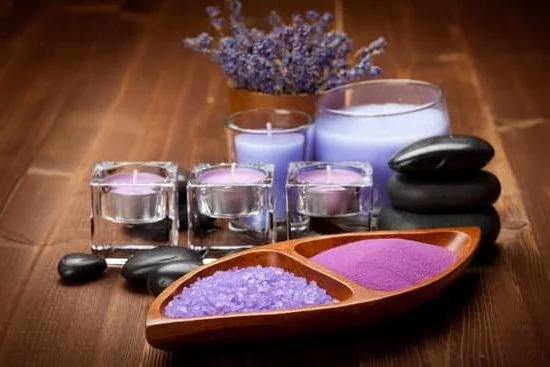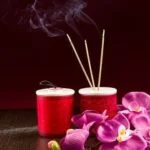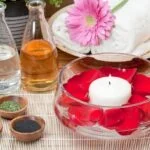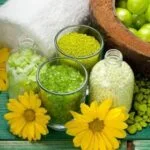
Aromatherapy is a form of alternative medicine that uses plant extracts, known as essential oils, to promote physical and mental well-being. These fragrant oils can be inhaled or applied topically to trigger various responses within the body and mind. While professional aromatherapy treatments can be expensive, DIY aromatherapy blends offer an affordable and accessible way to reap the benefits of this practice in the comfort of your own home.
Using DIY aromatherapy blends allows you to customize your experience based on your individual needs and preferences. Whether you’re looking to relax, energize, improve focus, enhance your mood, or simply indulge in a pleasant scent, there is a blend for every desired effect. With a wide variety of essential oils available, you have the freedom to create unique combinations that cater specifically to your goals and personal taste.
The benefits of DIY aromatherapy blends go beyond just providing a pleasant aroma. These mixtures have the potential to enhance your overall well-being by promoting relaxation, reducing stress and anxiety, improving sleep quality, boosting energy levels, increasing mental clarity and focus, uplifting mood, and even supporting immune function. By incorporating these natural remedies into your daily routine, you can achieve a healthier mind-body balance and enjoy the numerous advantages that aromatherapy has to offer.
Benefits of DIY aromatherapy blends
Aromatherapy has been used for centuries as a natural and holistic way to improve physical, mental, and emotional well-being. DIY aromatherapy blends offer a unique and personalized experience that can be tailored to suit your specific needs and preferences. By creating your own blends, you have the freedom to experiment with different oils, ratios, and scents to create something truly customized for yourself.
Personalized Benefits
One of the key benefits of DIY aromatherapy blends is the ability to personalize them according to your individual needs. Whether you’re looking to reduce stress and anxiety, boost energy levels, improve focus and concentration, or enhance your mood, you can create a blend that specifically targets those areas. By selecting essential oils known for their therapeutic properties related to your desired outcome, you can tailor the experience to cater directly to what you need most.
Cost-Efficient
Another advantage of DIY aromatherapy blends is that they are often more cost-efficient compared to pre-made mixtures. Many commercial aromatherapy products can be quite expensive due to production costs and brand markup. By creating your own blends at home using essential oils, carrier oils, and other optional ingredients like herbs or spices, you can save money while still enjoying the benefits of aromatherapy.
Creative Outlet
Creating your own DIY aromatherapy blends also provides a creative outlet for self-expression. Mixing different scents and experimenting with various combinations allows you to indulge in a sensory experience while engaging in a hands-on activity. It can be an enjoyable hobby that not only promotes relaxation but also fosters creativity.
By exploring the benefits of DIY aromatherapy blends, you can tap into a versatile form of self-care that has the potential to enhance your overall well-being in various ways. Whether it’s through personalizing the benefits, saving money, or indulging in a creative endeavor, DIY aromatherapy blends offer a unique and rewarding experience.
Choosing essential oils
When it comes to creating your own aromatherapy blends, choosing the right essential oils is crucial. Each essential oil has its own unique properties and benefits, so it’s important to select oils that will complement each other and enhance the desired effects of your blend. Here is a guide to help you navigate the world of essential oils and choose the ones that are perfect for your DIY aromatherapy blends.
Understanding Different Essential Oils
There are a wide variety of essential oils available, each with its own fragrance and therapeutic qualities. Some common examples include lavender, peppermint, lemon, tea tree, eucalyptus, and rosemary. Before selecting essential oils for your blend, take some time to familiarize yourself with their individual characteristics and potential health benefits.
For example, lavender is well-known for its calming and relaxing properties, making it a great choice for relaxation blends. Peppermint has an invigorating scent that can help boost energy levels and improve focus, making it ideal for energizing or concentration blends. Lemon has uplifting qualities and can be used in mood-enhancing blends to promote positivity.
Synergy and Compatibility
When choosing essential oils for your DIY blend, consider how different scents will work together. You want to create a harmonious combination that is pleasing to the senses while also providing the desired effects.
Some oils naturally complement each other well due to their similar scent profiles or complementary therapeutic properties. For example, lavender and chamomile both have calming properties and pair nicely together in relaxation blends. On the other hand, you may also want to experiment with contrasting scents to create a more complex aroma profile.
It’s important to note that while some oils may smell pleasant on their own, they may not blend well with others or cause skin sensitivities when combined. It’s always a good idea to do a patch test on your skin or consult resources that provide information on the compatibility of different oils before creating your blend.
Considering Personal Preferences and Needs
Ultimately, the essential oils you choose for your DIY blends should align with your personal preferences and needs. Consider scents that you find most appealing and beneficial for your well-being. Pay attention to how different aromas make you feel, as everyone reacts differently to scents.
Additionally, keep in mind any specific health concerns or sensitivities you may have. Certain essential oils may not be suitable if you are pregnant, have sensitive skin, or have certain medical conditions. It’s always best to research and consult with a healthcare professional if you have any concerns about using particular essential oils.
By carefully selecting the right essential oils for your DIY aromatherapy blends, you can create wonderful combinations that enhance your well-being and promote a sense of relaxation, energy, focus, or positivity. Experiment with different combinations and find the ones that resonate with you personally.
Safety precautions
Aromatherapy is a wonderful practice that can provide numerous benefits for your well-being. However, it is essential to keep safety precautions in mind when working with essential oils to ensure a positive and safe experience. Here are some important tips to consider:
- Dilute properly: Essential oils are highly concentrated substances and should never be used undiluted on the skin. Always dilute them with a carrier oil such as jojoba, almond, or coconut oil before applying them topically.
- Patch test: Before using any new blend on your skin, perform a patch test to check for any adverse reactions. Apply a small amount of the diluted blend to a small area of your skin and wait for 24 hours to see if there is any irritation or redness.
- Avoid sensitive areas: Certain areas of the body, such as the eyes, ears, and mucous membranes, are more sensitive than others. Be cautious when applying essential oil blends near these areas to avoid irritation or discomfort.
- Research contraindications: Some essential oils may have contraindications with certain medical conditions or medications. Make sure to thoroughly research each essential oil before incorporating it into your DIY blend if you have any health concerns.
- Keep out of reach of children and pets: Essential oils can be harmful if ingested by children or pets, so it’s crucial to store them safely out of their reach.
- Sun sensitivity: Citrus essential oils and certain other oils can cause photosensitivity, increasing your risk of sunburn or skin damage when exposed to sunlight. Avoid direct sunlight for at least 12 hours after topical application of these oils.
By following these safety precautions, you can enjoy the benefits of aromatherapy without any potential risks or adverse effects. Remember that everyone’s body chemistry is different, so it’s important to listen to your body and adjust blends accordingly if you experience any discomfort or irritation.
DIY aromatherapy blend recipes
Creating your own DIY aromatherapy blends is a fun and rewarding experience. Not only do you have the opportunity to create unique scents that align with your personal preferences, but you also have control over the quality of the ingredients used. Here are some step-by-step instructions to help you get started:
- Gather your materials: Before diving into creating your DIY aromatherapy blends, make sure you have all the necessary materials on hand. This includes essential oils, carrier oils (such as jojoba or almond oil), glass bottles for storage, and labels for identifying your blends.
- Choose your essential oils: Refer to the previous section on choosing essential oils to select the ones that align with your desired therapeutic benefits. For relaxation blends, lavender and chamomile are popular choices. For an energizing blend, consider using citrus oils like lemon or grapefruit. Experiment with different combinations until you find what works best for you.
- Measure carefully: Use a dropper or pipette to measure out the desired amount of each essential oil into a glass bottle. The number of drops will depend on the strength of the scent and whether you prefer a more subtle or potent aroma.
- Dilute with carrier oil: Most essential oils need to be diluted before application to avoid skin irritation. In general, a 2% dilution is recommended for adults, which means adding approximately 12 drops of essential oil per 1 fluid ounce (30 mL) of carrier oil. However, it’s always best to refer to specific guidelines for each individual oil.
- 5.Label and store: Once you have created your DIY aromatherapy blend, label the bottle with its name and date of creation. This will help you keep track of your creations and ensure that they are used within their shelf life (which can vary depending on the type of essential oil used). Store your blends in a cool, dark place away from direct sunlight to preserve their potency.
Remember, the beauty of DIY aromatherapy blends is that you can tailor them to your specific needs and preferences. Don’t be afraid to experiment with different essential oil combinations and adjust the scents according to your liking. With practice, you’ll develop a deeper understanding of the properties and benefits of various oils, allowing you to create custom blends that enhance your well-being in unique ways.
Relaxation blends
Aromatherapy is a holistic healing practice that uses essential oils to promote physical, mental, and emotional well-being. One of the key benefits of aromatherapy is its ability to help relax and calm the mind and body. In this section, we will explore a collection of soothing aromatherapy recipes that can help you achieve a state of deep relaxation.
One popular relaxation blend is the Lavender and Chamomile blend. Both lavender and chamomile essential oils have calming properties that can help reduce stress and anxiety. To create this blend, combine 5 drops of lavender oil with 3 drops of chamomile oil in a diffuser or add them to a carrier oil like sweet almond or jojoba oil for use in massage or bath.
Another relaxing blend is the Bergamot and Ylang Ylang combination. Bergamot is known for its mood-lifting qualities, while ylang ylang has sedative properties that can aid in achieving deep relaxation. Mix 4 drops of bergamot oil with 2 drops of ylang ylang oil in a diffuser or dilute them in a carrier oil for topical application.
Lastly, the Frankincense and Sandalwood blend is another great option for relaxation. Frankincense has been used for centuries to induce feelings of tranquility, while sandalwood has grounding properties that can help calm an overactive mind. Combine 3 drops of frankincense oil with 4 drops of sandalwood oil in a diffuser or use them in a room spray to create a peaceful atmosphere.
| Blend | Essential Oils |
|---|---|
| Lavender and Chamomile | 5 drops lavender + 3 drops chamomile |
| Bergamot and Ylang Ylang | 4 drops bergamot + 2 drops ylang ylang |
| Frankincense and Sandalwood | 3 drops frankincense + 4 drops sandalwood |
Energizing blends
Are you feeling tired and in need of a pick-me-up? Energizing blends can provide just the boost you need to increase your energy levels and improve focus. These invigorating DIY aromatherapy mixtures utilize specific essential oils known for their uplifting and stimulating properties.
One popular energizing blend is made with a combination of peppermint, lemon, and rosemary essential oils. Peppermint oil is known for its refreshing and cooling effect, while lemon oil has a citrusy scent that enhances mood and increases mental alertness. Rosemary oil is often used to combat fatigue and boost cognitive function. Together, these oils create an energizing aroma that can help improve concentration and elevate mood.
Another effective energizing blend includes grapefruit, bergamot, and eucalyptus essential oils. Grapefruit oil has an uplifting scent that helps to invigorate the senses, while bergamot oil promotes feelings of happiness and reduces stress. Eucalyptus oil provides a cooling sensation that can relieve mental exhaustion and promote clear thinking.
To make an energizing blend using these oils, simply combine 3 drops of peppermint oil, 2 drops of lemon oil, and 1 drop of rosemary oil in a diffuser or add them to a carrier oil for topical use. Alternatively, mix 4 drops of grapefruit oil with 3 drops of bergamot oil and 2 drops of eucalyptus oil for a refreshing blend that will uplift your spirits.
Using these invigorating DIY aromatherapy mixtures, you can boost your energy levels naturally without relying on caffeine or other stimulants. Whether you need an extra push to get through the day or want to increase focus during work or study sessions, these blends can provide the mental clarity and vitality you need to accomplish your goals.
Focus and concentration blends
Aromatherapy blends can be incredibly powerful tools for improving focus and concentration. Whether you’re studying for an exam, trying to stay focused at work, or just need a mental boost, these essential oil combinations can help increase your mental clarity and productivity. By harnessing the power of scent, you can create a calming and focused environment that supports your cognitive function.
To create a focus and concentration blend, start by selecting essential oils known for their stimulating properties. Some popular choices include rosemary, peppermint, lemon, basil, and eucalyptus. These oils have invigorating scents that can help sharpen mental clarity and enhance cognitive performance.
Here are some DIY essential oil blends to try out:
- “Mental Clarity Blend”: Combine 3 drops of rosemary oil, 2 drops of peppermint oil, and 2 drops of lemon oil in a diffuser. This blend is great for promoting clear thinking and mental focus.
- “Study Aid Blend”: Mix 5 drops of basil oil, 3 drops of eucalyptus oil, and 2 drops of lemon oil together. Dilute this blend with a carrier oil like almond or jojoba oil and apply it to your pulse points before studying or working on mentally demanding tasks.
- “Brain Boost Blend”: In a roller bottle, combine 10 drops of rosemary oil, 8 drops of peppermint oil, and 5 drops of lemon oil. Fill the rest of the bottle with a carrier oil like fractionated coconut oil or sweet almond oil. Apply this blend to your temples or wrists when you need an extra boost of mental clarity throughout the day.
Remember to always do a patch test before applying any essential oils topically and consult with a healthcare professional if you have any specific medical conditions or concerns. It’s also important to follow proper dilution ratios and not exceed recommended usage guidelines for each essential oil.
By incorporating these focus and concentration blends into your daily routine, you can create a more productive and focused environment for yourself. Experiment with different combinations of essential oils to find the ones that work best for you and enjoy the benefits of increased mental clarity and concentration.
Mood-enhancing blends
When it comes to aromatherapy, the power of scent cannot be underestimated. Certain essential oils have the ability to uplift our spirits, improve our mood, and promote feelings of positivity. Creating mood-enhancing blends is a wonderful way to harness the benefits of aromatherapy and improve your overall well-being.
One popular essential oil for mood enhancement is lavender. Known for its calming properties, lavender has been used for centuries to reduce stress and anxiety. By combining lavender with other uplifting scents such as bergamot or sweet orange, you can create a blend that not only promotes relaxation but also boosts your mood.
Another essential oil known for its mood-enhancing effects is peppermint. Its invigorating and refreshing aroma has been shown to increase alertness and improve focus. Combining peppermint with citrus oils like lemon or grapefruit can create an energizing blend that puts you in a positive mindset.
In addition to lavender and peppermint, there are many other essential oils that have mood-enhancing properties. Some popular choices include rosemary, ylang-ylang, and geranium. Experimenting with different combinations of these oils can help you find the perfect blend for improving your mood and promoting positivity.
| Essential Oil | Mood-Enhancing Properties |
|---|---|
| Lavender | Calming, reduces stress and anxiety |
| Peppermint | Invigorating, increases alertness and focus |
| Rosemary | Stimulating, enhances mental clarity |
| Ylang-Ylang | Uplifting, promotes relaxation and positivity |
| Geranium | Balancing, uplifts mood and reduces tension |
Incorporating mood-enhancing blends into your daily routine is simple. You can add a few drops of your preferred essential oils to a diffuser and enjoy the uplifting aroma throughout your space. Alternatively, you can create your own personal fragrance by mixing the essential oils with a carrier oil and applying it to your pulse points.
By experimenting with different mood-enhancing blends, you can discover the scents that have the most positive impact on your well-being. Whether you need a boost of energy, want to relax after a long day, or simply want to promote a more positive mindset, DIY aromatherapy blends can be an effective and enjoyable way to improve your mood and overall quality of life.
DIY aromatherapy gifts
Finding the perfect gift for friends and family can sometimes be a challenge. However, with DIY aromatherapy blends, you can create unique and personalized presents that are both thoughtful and beneficial for their well-being. Homemade aromatherapy gifts not only demonstrate your creativity but also show that you have put effort into creating something special just for them.
One popular DIY aromatherapy gift idea is a personalized room spray. You can choose essential oils with scents that your loved ones enjoy and blend them together to create a refreshing and aromatic spray that can be used in any room of their home.
Whether it’s a calming lavender blend or an uplifting citrus blend, the possibilities are endless. Simply combine the chosen essential oils with water in a spray bottle, shake well before each use, and voila – you have a custom-made room spray.
Another great option for DIY aromatherapy gifts is making scented bath salts. These can be incredibly relaxing and indulgent for anyone who enjoys taking baths. Choose soothing essential oils such as chamomile, lavender, or ylang-ylang, and mix them with Epsom salts or sea salt to create fragrant bath salts. Package them in attractive jars or containers and consider accompanying them with some scented candles or a plush bathrobe for an extra touch of luxury.
Additionally, you can also make personalized essential oil roller blends as gifts. These roller blends are convenient and portable, allowing your loved ones to enjoy the benefits of aromatherapy throughout their day. Select essential oils based on their specific needs, whether it’s stress relief, sleep promotion, or mood enhancement. Dilute these oils properly using carrier oil such as jojoba or almond oil, fill small roller bottles with the mixture, and customize the labels for each recipient.
Conclusion
In conclusion, DIY aromatherapy blends offer a wide array of benefits that can greatly enhance your overall well-being. By creating your own blends, you have the power to customize the combination of essential oils to suit your specific needs and preferences. This level of personalization allows for a more tailored approach to aromatherapy, ensuring that you are getting the maximum benefits from each blend.
One of the key advantages of DIY aromatherapy blends is their ability to promote relaxation and reduce stress. The soothing scents of lavender, chamomile, and ylang-ylang can transport you into a state of calmness, helping to ease tension in both the mind and body. These relaxation blends are perfect for unwinding after a long day or incorporating into your self-care routine.
On the other hand, energizing blends can provide an instant pick-me-up when you’re feeling low on energy. Combining invigorating essential oils such as peppermint, lemon, and rosemary can help sharpen your senses and increase alertness. These blends are ideal for those sluggish mornings or midday slumps when you need a natural boost to stay focused and productive.
In addition to relaxation and energy-boosting effects, DIY aromatherapy blends also have the potential to improve focus, concentration, and mood. Scents like rosemary, basil, and bergamot have been shown to enhance mental clarity and promote better cognitive function. Meanwhile, uplifting oils such as grapefruit, orange, and geranium can uplift your spirits, improve mood, and increase positivity.
Overall, DIY aromatherapy blends have a versatile range of uses that go beyond simply creating pleasant scents in your home or workspace. They have the potential to positively impact your physical health as well as mental well-being. So why not embark on a journey into the world of DIY aromatherapy?
With careful selection of essential oils and following safety precautions outlined earlier in this article, you can create your own personalized blends that cater to your specific needs and preferences. Experience the power of aromatherapy and its potential to enhance your overall well-being today.
Frequently Asked Questions
How do you make aromatherapy blends?
Making aromatherapy blends involves combining different essential oils to create a specific scent or therapeutic effect. The first step is to gather the desired essential oils, taking note of their individual properties and benefits. Next, using a carrier oil such as jojoba or almond oil, add a few drops of each chosen essential oil to create the desired blend.
It’s important to consider the potency and intensity of each oil, adjusting the number of drops accordingly to achieve the desired balance. Finally, mix the oils thoroughly and store them in an amber glass bottle to protect them from light and preserve their quality.
How do you make your own oil blends?
Creating one’s own oil blends allows for customization according to personal preferences or specific needs. To begin making an oil blend, select a carrier oil that suits your skin type and preferences. Then, based on your desired aroma or therapeutic benefits, choose a combination of essential oils that harmonize well together.
Take into account factors such as top notes (the lighter scents), middle notes (the balancing scents), and base notes (the richer scents) when blending for a pleasing overall aroma. Start by adding a few drops of each selected essential oil to about 30 ml of carrier oil in a dark glass bottle, adjusting the ratios until you achieve the desired scent intensity and therapeutic effects.
What essential oils can you blend together?
There are countless possibilities when it comes to blending essential oils together. However, it’s important to consider their individual properties and interactions before creating your own unique blends.
Some common combinations include floral scents like lavender with citrusy notes such as bergamot or sweet orange for a calming yet uplifting blend; peppermint can be blended with eucalyptus for refreshing respiratory support; meanwhile, combining woody scents like cedarwood or sandalwood with floral notes like rose or geranium can create a grounding and soothing blend for meditation or relaxation purposes. Remember to research and test small amounts before creating larger batches to ensure compatibility and avoid any adverse reactions.




